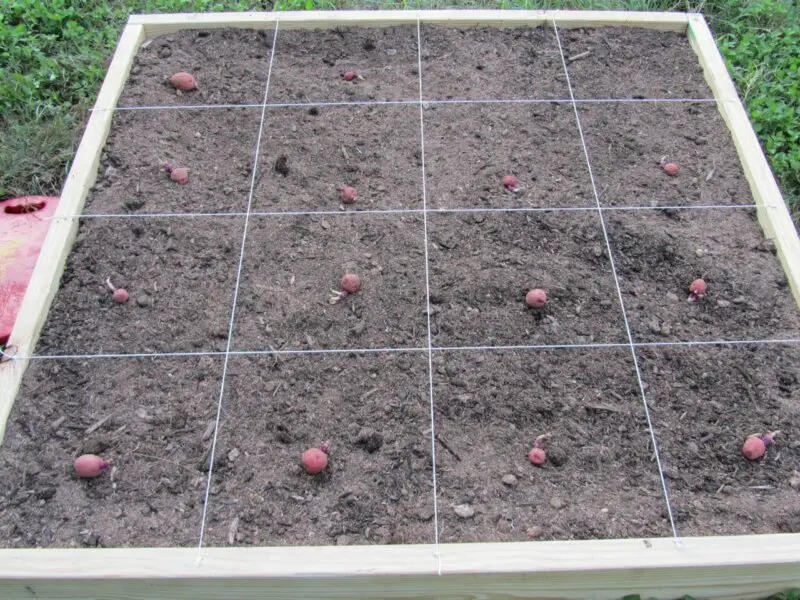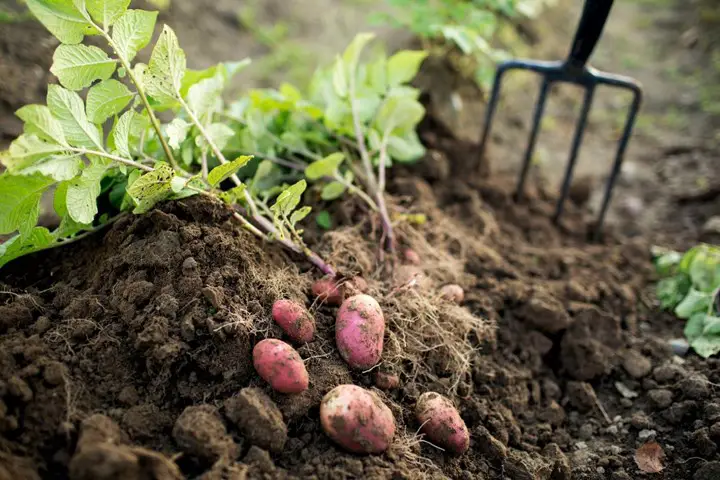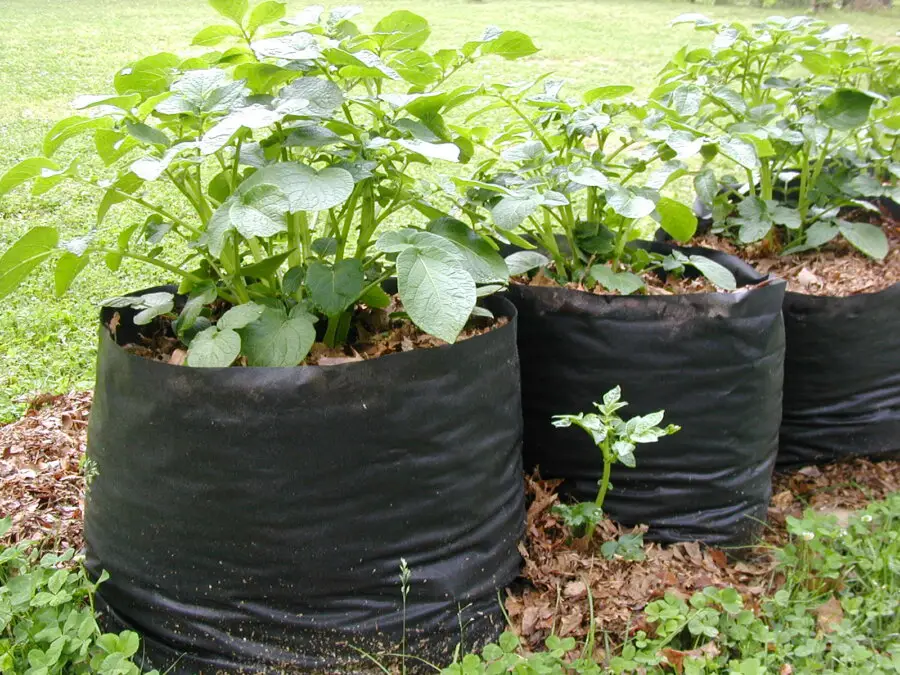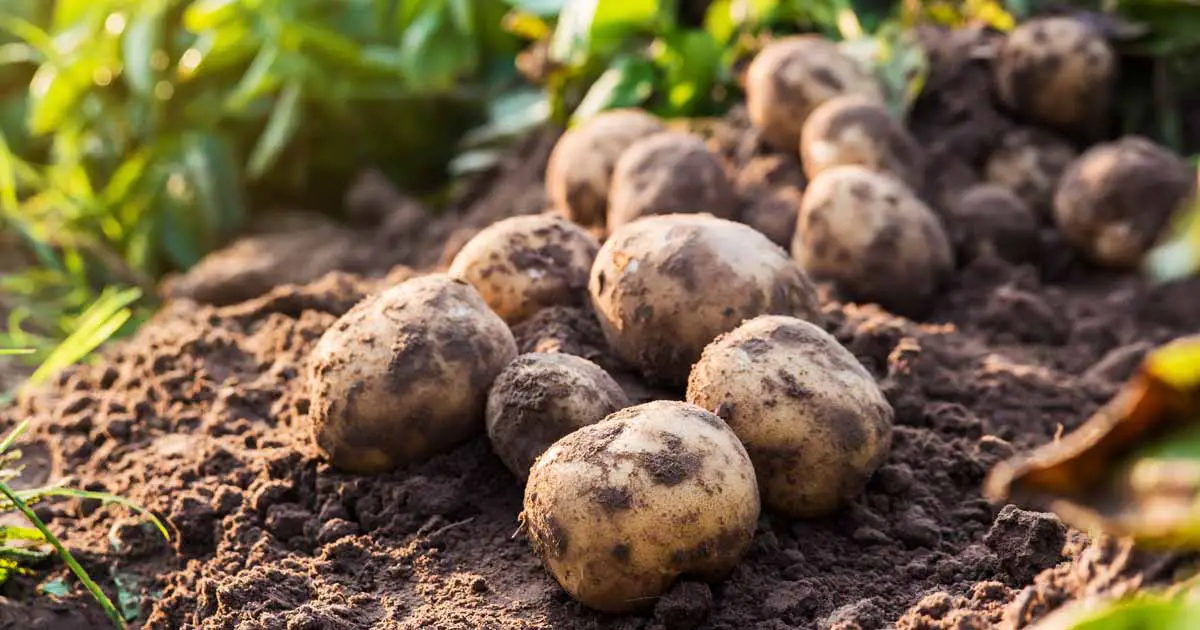What is the best way to plant seed potatoes and get a bumper harvest?
Although potatoes (Solanum tuberosum) are simple to grow, spacing is the ultimate game-changer. Unlike other tubers with underground stems, potatoes need lots of space for successful plant growth.
If potato spacing is done wrongly, the seeds don’t reach their maximum potential and become deformed, leading to a dismal potato harvest.
Seeing how crucial potato spacing is, raises the question, ‘How far apart to plant potatoes?’
How much space do potatoes need to grow depends on two factors:
- The potato varieties you chose for your garden
- The kind of gardening
But before we delve into that, read on the importance of spacing potatoes the right way.
Why Is It Important to Create Enough Space When Planting Potatoes?
Growing potatoes typically adheres to a complete routine during planting time, weeding, and hilling. While hilling, you should move a few inches of soil up and heap it around the plant’s base. Through this heaping process, the potato plant is protected from direct sunlight.
Now, if there’s no sufficient space between potato plants during the growing season, there’s a danger of inadequate hilling. Not hilling the plants enough exposes them to the elements, particularly direct sunlight and rain.
That’s why enough spacing when planting potatoes is non-negotiable for a successful harvest.
How Close Can You Plant Potatoes Together: 2 Factors to Consider
1. Potato Varieties and Spacing
How you space your potatoes hinges on the varieties you choose for your garden. Varieties that yield bigger potatoes, such as Russet, need more space.
On the other hand, potato types like Yukon gold that yield smaller potatoes need less space.
2. Types of Gardening
As stated earlier, potato plants require enough room to grow and flourish, hence the essence of spacing. The amount of available planting space will determine how far apart to plant potatoes.
You can either opt for square foot gardening potatoes, in-ground gardening or grow bags.
The three options of growing potatoes differ in technique and the recommended spacing space.
Square Foot Gardening
Square foot gardening potatoes are the best bet for farmers without lots of garden space to accommodate many rows. If you choose this technique, plant small potato varieties or fingerlings since they easily take to the small spacing and require less growing room.
Do you know that a simple 4’x4’ garden can comfortably accommodate 16 potato plants and give you an impressive harvest?
Here’s what you should do:
- Your home garden bed should accommodate 10 to 12 inches of soil.
- Place your seed potatoes after every square foot. A square-foot grid can come in very handy in spacing.
- After spacing the potatoes correctly, cover the tubers with 2 inches of soil.
- As the potatoes continue to grow, hill them with soil all around to avoid exposure to direct sunlight. Failure to do so will yield splotchy inedible green potatoes.

In-Ground Gardening
If you settle for in-ground gardening to plant your potato seeds, it pays to have more space than the square-foot technique.
Check out what you have to do:
- Dig trenches in your garden according to the available spaces. Essentially, the trenches should be 8 inches in depth and 6 inches in width.
- For multiple trenches, ensure that they are spaced 2 to 3 feet apart for more manageable growth and effortless tending of the plants.
- If you have big seed potatoes, cut them into seed pieces if they’ve got multiple eyes. The cut sides must dry before planting; hence, a few days’ wait is recommended.
- Finally, place potato seeds in the trenches every 12 to 15 inches.
- Then, add a couple of inches of compost or organic matter. If you plan to grow baby potatoes, you can reduce the space a bit.

Grow Bag Potato Gardening
Say you lack enough space, or you entirely don’t have a garden, you can still grow potatoes in grow bags. A 5-gallon container can give you a considerable harvest, although it should have lots of drainage holes on the sides and bottom. Standing water is one of the potatoes’ greatest enemies.
Don’t forget to use a bucket that’s permeable and breathable to get larger potatoes.
Factors to keep in mind:
- Ensure that your grow bag has around 3 inches of soil and compost.
- Ensure that every container holds 2-3 seed potatoes. From there, treat the potatoes like any other technique, seeing to hilling to cover the tubers.

What Happens if You Plant Potatoes Too Close Together?
Potato spacing can be the difference between harvesting potatoes that’ll blow your mind and a disappointing harvest. Planting potatoes too close together will, in most cases, result in leggy, deformed, stunted, or discolored potatoes.
- For potato tubers growing from one root system, one may sprout more leaves than required for photosynthesis. This often leads to nutrient deficiency and, ultimately, leaf discoloration.
- If one tuber gets adequate light by virtue of being above the ground and the partner doesn’t since it’s buried, it results in smaller fruits.
- Closely planted potatoes (overcrowding) result in soil dehydration since the potatoes will need more water than the other plants.

